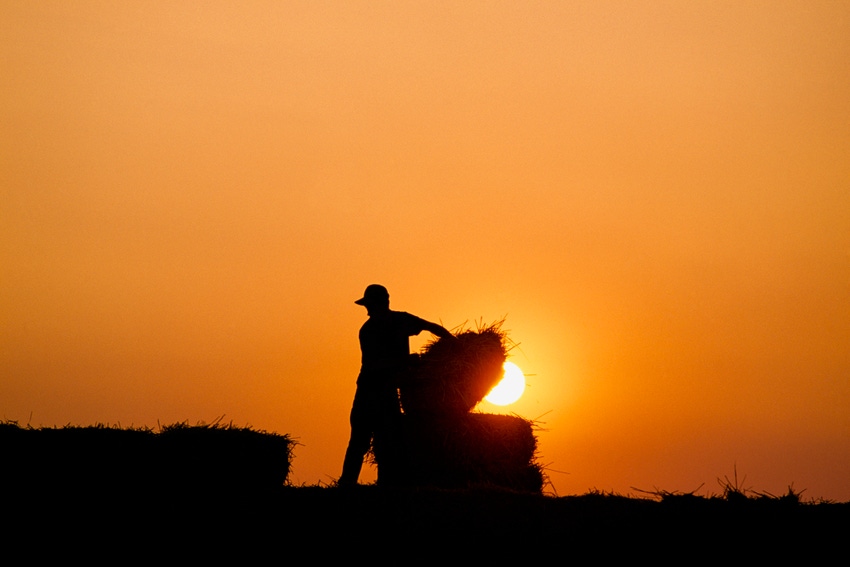
Some interviews are tougher to do than others. Interviewing a family who had lost loved ones in a tornado in Jefferson County in 2012 was difficult, especially when one of the victims was a very young boy. Sitting across the table from Roger Cian’s wife, daughter and niece recently after he died in a grain bin accident and hearing their concern for other people was moving, to say the least.
This story is difficult to write because it is not an interview. Instead, it’s a tribute and sad good bye to Jeff Phillips, a retired Purdue University Extension educator, who passed away at age 57. He spent more than 30 years in Extension, serving farmers first on campus as he worked with Dave Mengel, longtime soil fertility specialist, and for many years as the Tippecanoe County Extension ag educator.
My path first crossed with Jeff when he was working with Mengel, doing studies on the effectiveness of lime. One of the first photo shoots I did with him was on a Benton county farm some 25 years ago, next to a pile of lime. He was doing a test on a real farm to compare liming methods before testing research ideas on real farms was in style.
Working with farmers always brought a smile to Jeff’s face. He wasn’t your sit-in-the-office and wait for people to come in educator. He was out and about, responding to problems about crops or just dropping by this dealership or that to see what was abuzz in farm country.
I tagged along in the early days as he investigated everything from missing corn rows to why some corn rows were green and some were yellow. Later I convinced Spectrum technologies to loan us a hand-held soil pH meter, and Jeff helped me do an extensive soil testing project on my brother’s farm near Ottebein.
We sat up shop at the Purdue Agronomy farm in one of the old shop buildings where meetings were held before the Beck Ag center was built, and tested some 70 samples. My son, then about 8 to 10 years old, tagged along, and Jeff never missed a chance to get him to smile and get him involved.
Later we hooked up to do a joint plot between Indiana Prairie Farmer and Purdue Extension at the Throckmorton Research Center. For more than a decade, we tried to determine what it would take to raise soybean yields. We worked in small plots, and spread fertilizer, measured on a scale in the back of Jeff’s pickup, by hand. One afternoon dark clouds gathered in the west, and lightning started flashing, but he looked at me and knew I wouldn’t quit until we were done. It was probably against some Purdue safety code, but then I didn’t read Purdue’s safety code.
We learned some things like sometimes pelleted lime pays, and that insecticides and fungicides may make soybean seed look better, but don’t always make them yield more. After we invested days in an elaborate soybean trial one year and then waited on a plot combine so long that the weather turned sour and we had to ditch it, we switched to corn. We proved to ourselves and anyone who would listen that planting depth doesn’t matter down to four inches, unless it is shallower than an inch. Then you’re risking yield loss.
Beyond field research
More than all the things we learned, what I remember most is the comradery between Jeff, the farm crew and anyone else he came into contact with. He was inquisitive, helpful, intuitive, and a hard worker. If it took until dark to get the plot done, it took until dark to get the plot done.
We shared many a conversation. On one of our last forays together we tried out Spectrum Technologies Green Index app for determining if plants had sufficient nitrogen. We also tracked a strange pattern of yellow corn across the field. We didn’t solve that one, but it wasn’t for a lack of trying.
The plot continues under Bob Nielsen’s guidance. And I still enjoy working with the farm crew. But for all of us, it’s not the same. We’ve lost a good friend, an upbeat, positive, smiling face and agriculture lost an ardent supporter who understood farmers and what made them tick. He knew how to get them to meetings, and seemed to know what they needed to learn before they even knew themselves.
People like that, as educators and friends, only come along a few times in a lifetime, if you’re lucky. Here’s the best tribute I can offer - job well done, old friend, and may we one day meet again.
About the Author(s)
You May Also Like




